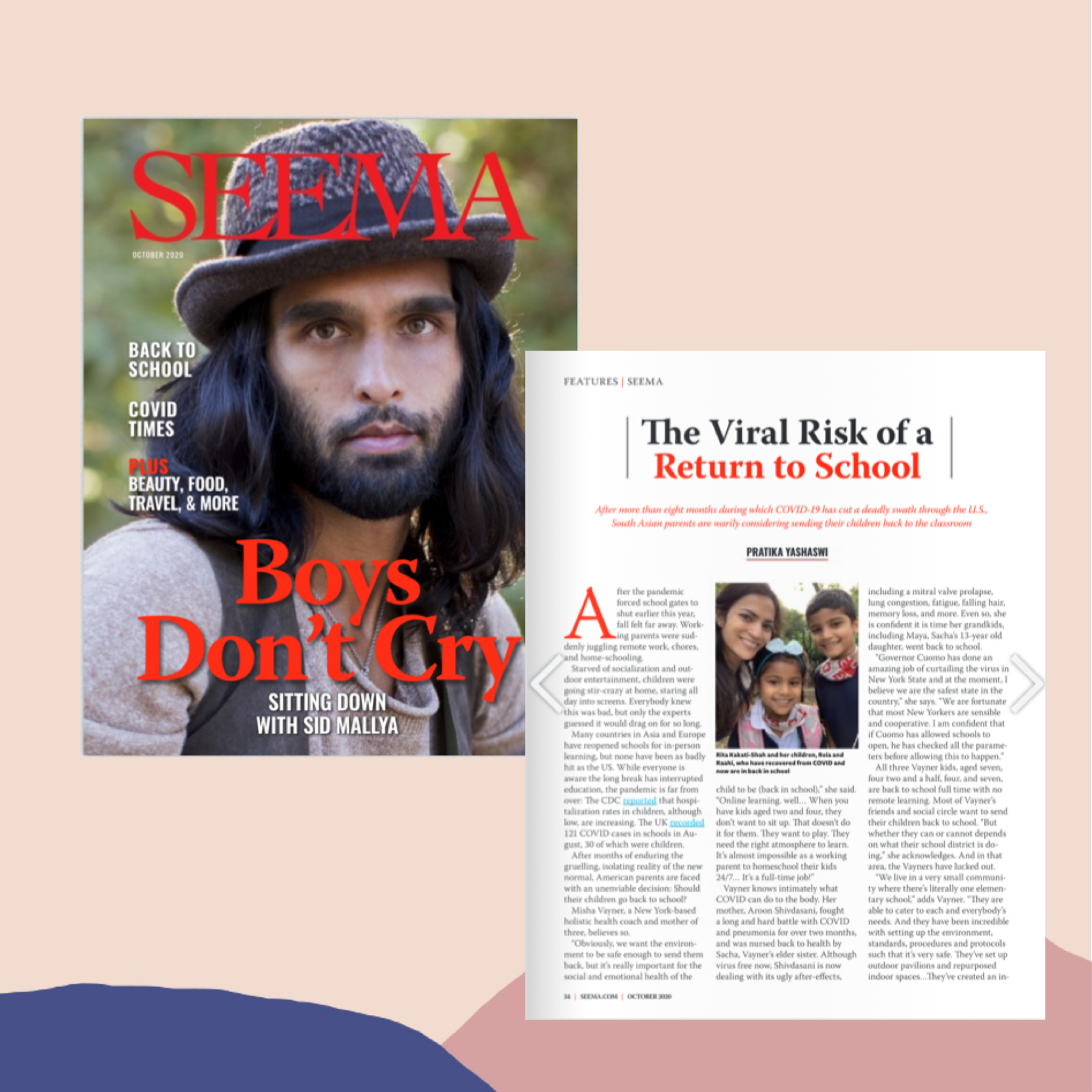After more than eight months during which COVID-19 has cut a deadly swath through the U.S.,
South Asian parents are warily considering sending their children back to the classroom.
By Pratika Yashaswi
After the pandemic forced school gates to shut earlier this year, fall felt far away. Working parents were suddenly juggling remote work, chores, and home-schooling. Starved of socialization and outdoor entertainment, children were going stir-crazy at home, staring all day into screens. Everybody knew
this was bad, but only the experts guessed it would drag on for so long. Many countries in Asia and Europe have reopened schools for in-person learning, but none have been as badly hit as the US. While everyone is aware the long break has interrupted education, the pandemic is far from over: The CDC reported that hospitalization rates in children, although low, are increasing. The UK recorded 121 COVID cases in schools in August, 30 of which were children.
After months of enduring the gruelling, isolating reality of the new normal, American parents are faced
with an unenviable decision: Should their children go back to school?
Fellow New Yorker Rita Kakati-Shah, CEO of the Uma Group, had her whole family testing positive for
the coronavirus in March. It hit her husband, herself and her two children Reia and Raahi, aged 5 and 7.
“The kids didn’t even notice,” she says. “The thing is with kids, the reason they’re so resilient to this is that they need to be getting sick all the time to build up their own immune systems. Right. If you stop kids from being exposed to germs, they’re going to get unhealthy.” “It gives me confidence that my kids had the virus before,” says Kakati-Shah. “And they’re just craving that social interaction. They really missed that. The bottom line is, for my husband and I from a space perspective, a health perspective, a
sanity perspective, and from a family perspective, the best decision for us was to send them back to school.”
Like Vayner and Kakati-Shah, the South Asian community overall, is ready for their children to go back
to school in some form or the other. Some schools have provided the option of a hybrid model of attendance, where children go to school for only a few days a week, or a few hours a day.
The American Academy of Pediatrics (AAP) says that having kids back in school is best for their physical,
mental, social, and emotional health. It is also, as most parents would agree, how children learn best.
Currently, 0.3%-8.2% of all child COVID-19 cases have resulted in hospitalizations and 0%-0.2% of all child COVID-19 cases have ended in death. Compare that to the flu, which has seen record-high hospitalizations among young children this year.
As Kakati-Shah says, children are resilient, and not just physically. To spend precious months of childhood cooped up, and in front of a screen with limited playtime though, would be depressing. Learning with teachers and frolicking with friends is crucial to a child’s development. Perhaps
that is worth the risk — even if they have to do it with a mask on.
Read the full article here.

